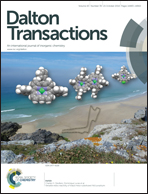Dinuclear [{(p-cym)RuCl}2(μ-phpy)](PF6)2 and heterodinuclear [(ppy)2Ir(μ-phpy)Ru(p-cym)Cl](PF6)2 complexes: synthesis, structure and anticancer activity†
Abstract
Phpy bridged homodinuclear Ru–Ru (1) and heterodinuclear Ir–Ru complexes (2) have been developed. Complex 2 induces autophagy towards the cisplatin resistant human breast cancer (MCF7) cell line, whereas 1 is inactive.
2 and heterodinuclear [(ppy)2Ir(μ-phpy)Ru(p-cym)Cl](PF6)2 complexes: synthesis, structure and anticancer activity](/en/Image/Get?imageInfo.ImageType=GA&imageInfo.ImageIdentifier.ManuscriptID=C4DT01033G&imageInfo.ImageIdentifier.Year=2014)

 Please wait while we load your content...
Please wait while we load your content...